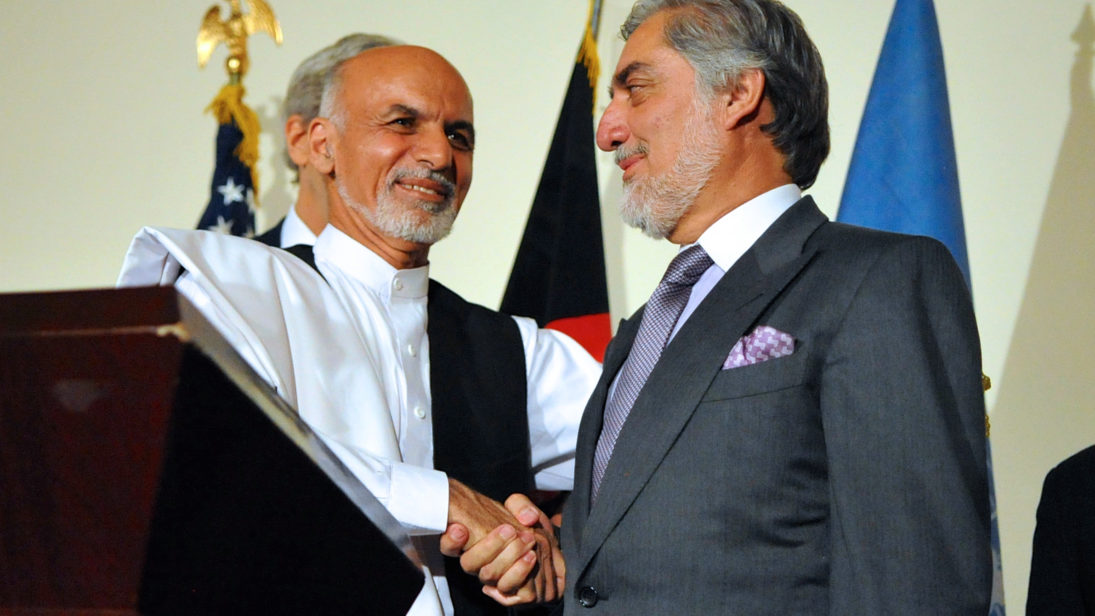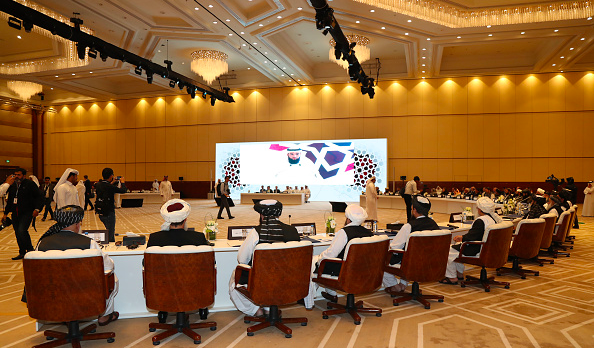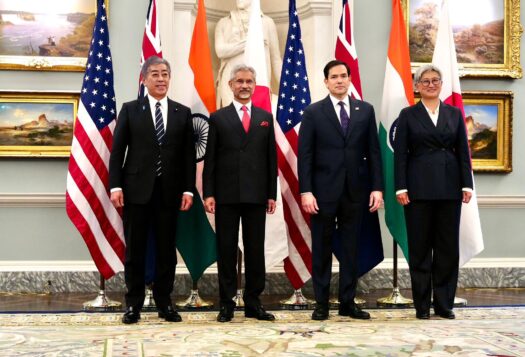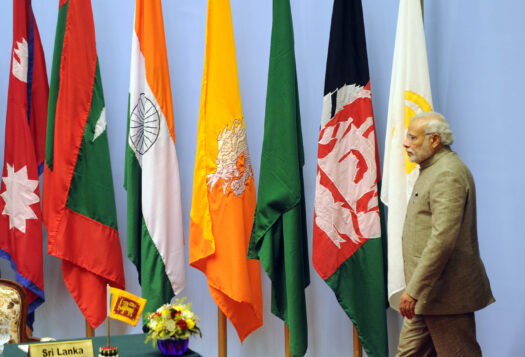
Even after almost half a century of conflict, Afghanistan has ranked first out of the ten must-watch conflicts for 2020 by the International Crisis Group. Today, the fate of Afghanistan’s system of government is at stake at the negotiating table with the Taliban, which is looking to reinstate the Islamic Emirate of Afghanistan and enshrine Sharia law within its constitution. The primary mandate of a power-sharing Afghan government would be to arrive at a peace deal before the United States pulls out its troops.
Whether the current government and the Taliban have the will and ability to sustain a legitimate peace depends in large part on the following factors: first, the Afghan political leaders’ capacity to negotiate an end to the enduring internal conflict; second, the Afghan government’s resolve to defend a pluralist constitution that grants Taliban some, but not dominant, influence; third, the Taliban’s willingness to become normal non-violent political actor; and, finally, the international community’s commitment to supporting post-peace resettlement.
A turbulent 2020
The February 2020 Doha agreement—which largely focuses on Taliban prisoner releases and U.S. troop withdrawal in exchange for ending America’s longest war—left all other issues to the Intra-Afghan dialogue negotiating table. The dialogue has not yet taken place as a result of the Afghan-U.S. government’s disagreement over a five thousand Taliban prisoner swap and the internal dispute over the fraudulent presidential election results —which resulted in both leaders proclaiming themselves President of Afghanistan and holding simultaneous inauguration ceremonies. Over the past 12 weeks, however, 3,000 prisoners have been released, and the election dispute, after intensive mediation of the Afghan politicians and U.S. diplomatic pressure to cut USD one billion in aid, resulted in the formation of a new power-sharing government. The political agreement, called “Tawafoq-nama-ye Siasi,” guaranteed that Ashraf Ghani would remain President and former CEO Abdullah Abdullah would become chairman of the High Council for National Reconciliation, responsible for facilitating the peace process.
Flaws in the Power-sharing Agreement Structure
Building a sustainable peace demands a strong and committed Afghan government capable of negotiating with and, if needed, sharing power with the Taliban.
Building a sustainable peace demands a strong and committed Afghan government capable of negotiating with and, if needed, sharing power with the Taliban. If one examines the political record of the two leaders tasked with nominating half of the cabinet and negotiating with the Taliban, one will unveil how mistrust entangled the failed previous National Unity Government (NUG). Over the past five years, Ghani and his inner circle attempted to centralize power in the Presidential Palace, while Chief Executive Officer (CEO) Abdullah and his team rallied for decentralization. As result, their government malfunctioned and acting ministers ran most departments. Many essential portfolios were never filled. As the corruption continued, the Afghan nation lost its trust in the democratization and electoral process. Under their leadership, the U.S.-Afghanistan partnership weakened the extent that Washington shelved Kabul in its peace talks with the Taliban.
Unlike the previous NUG, which formed as a result of former U.S. Secretary of State John Kerry’s 2014 mediation, the new government has established itself with former president Hamid Karzai and former mujahideen leader Abdul Rab Rasul Sayyaf as mediators. Both have, in exchange, appointed their own people to key positions. In fact, as part of the new power-sharing agreement, a new High State Council must be established where the influential national figures, potentially including Jihadi leaders, would be tasked with advising the President on important issues, including the peace process. As a growing number of individuals with disparate interests have been granted decision-making power, an intra-Afghan peace deal appears ever more elusive.

Cyclical Absence of a Peace Plan
As an internal leadership contest persists, the new administration also lacks a feasible peace plan, a willingness for compromise, and the requisite institutional knowledge to decisively steward the peace process.
This has its historical antecedents in the country, to the extent that “peace process” and “reconciliation” have become hackneyed political jargon in Afghanistan. The narrative of (largely failed) attempts at peace includes: Barbak Karmal’s ten-point reconciliation program in 1985 and Najibullah’s failed National Reconciliation Policy in the 1990s; Karzai’s National Consultative Peace Jirga in 2010; and, now in 2020, Ghani and Abdullah’s efforts to reach out to “upset brothers” in the Taliban. It seems that every other decade Afghan officials, in a top-down manner, ask their rivals to leave their weapons and join the reconciliation process.
The most telling historical parallel to now is Afghanistan at the end of the Cold War. In 1987, former Afghan communist leader Najibullah had developed a National Reconciliation Policy in an effort to install a sustainable peace in Afghanistan. At the time, many experts believed that the Afghan communist leaders and the mujahideen would oversee an effective peace process after the Soviet withdrawal. Instead, the mujahideen rejected Najibullah’s reconciliation proposal, and both sides chose to stay in the power. It ultimately became impossible for Najibullah to run the country. His forced resignation led to the collapse of the state, the beginning of the civil war, and indirectly contributed to the rise of the Taliban.
After two decades of war with the Taliban, Afghanistan appears to have come full circle, with the current scenario paralleling the Soviet Union’s 1989 withdrawal. Back then, Najibullah and the Mujahideen refused to share the power, and now, once again, the Afghan leaders and the Taliban are not committed to any legitimate power-sharing agreement.
Now, after two decades of war with the Taliban, Afghanistan appears to have come full circle, with the current scenario paralleling the Soviet Union’s 1989 withdrawal. Back then, Najibullah and the mujahideen refused to share the power, and now, once again, the Afghan leaders and the Taliban are not committed to any legitimate power-sharing agreement. The Taliban continue referring to the Afghan government as a “foreign puppet” and claiming victory to their fighters. Researchers of Afghanistan Analysts Network (AAN), who have studied most peace proposals from Afghan political parties, have concluded a concrete peace plan is totally lacking. All parties feign solutions to Afghanistan’s political future—including President Ghani with his outdated seven point plan—but lack genuine resolve and a concrete plan for addressing the Taliban’s stake therein.
The absence of a legitimate vision for Afghanistan’s future is a reciprocal problem, as it remains unclear what the Taliban seeks to gain from negotiation and what their red lines are concerning a future government. Even when Taliban deputy leader Serajuddin Haqqani published an Op-Ed, “What We, the Taliban Want,” in the New York Times, he failed to clearly specify their aims. The AAN report makes it is clear that unresolved debates from the U.S.-Taliban talks would be left to the intra-Afghan Dialogue. This would include issues the Afghan government considers red lines—approving Sharia amendments to the constitution, the reintegration of Taliban fighters into the Afghan National Security Forces in lieu of disarmament, a Taliban-led interim government—and would require U.S. or international mediation to arrive at a compromise.
The current government lacks the organizational knowledge and institutional legitimacy to prevent backlash to a peace deal. Afghanistan’s institutions—which are meant to manage and implement the peace process—were abolished or transferred multiple times in the past decade from one department to another. The old High Peace Council of President Karzai, cost millions of dollars for high paid salaries, luxury SUVs, rent of offices and houses without any satisfactory result. After nine years of failure without any achievement, the organization has been dissolved. In 2019, President Ghani attempted to bring the peace process under his direct supervision by establishing the Ministry for Peace Affairs. The Ministry—which functions under the auspices of Abdullah— includes Minister Salam Rahimi (former chief of staff of President Ghani) and few senior advisors from Ghani’s inner circle but lacks the expertise and regional offices to manage the peace process.
The current government lacks the organizational knowledge and institutional legitimacy to prevent backlash to a peace deal. Afghanistan’s institutions—which are meant to manage and implement the peace process—were abolished or transferred multiple times in the past decade from one department to another.
Conclusion
It would be too optimistic to expect the Afghan government and the Taliban to manage their contradictory views through the intra-Afghan dialogue in the near future. What is clear is that despite the fact that Taliban have not reduced their violence, President Trump is planning to withdraw U.S. troops, perhaps entirely, before the November U.S. election. In the meantime, if Kabul elites continue the internal power-struggle and corruption, the Taliban will use political uncertainty and fragile economy as an opportunity to delay the actual negotiations until international forces have left Afghanistan. COVID-19 challenges and persisting poor governance and corruption make the state more vulnerable to Taliban violence.
The only way productive step forward for Afghanistan would involve the Afghan government ending its internal power-struggle, committing itself to defeat corruption, and adopting a pluralistic approach to reconciliation.
The international community—and the United States in particular—should, instead of issuing another blank check to a corrupt system, work with both parties to end the violence, and negotiate a permanent ceasefire with room for significant compromise. The United States should use its leverage to force the Taliban to accept the conditions of a pluralistic Afghan society and extend a firm commitment to support the post-peace Afghan government, regardless of its form.
***
Image 1: Wikimedia Commons
Image 2: Karim Jaafar/AFP via Getty Images


